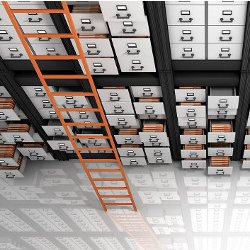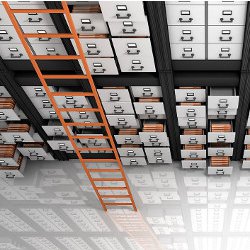
Software is becoming the fabric that binds our personal and social lives, embodying a vast part of the technological knowledge that powers our industry and fuels innovation. Software is a pillar of most scientific research activities in all fields, from mathematics to physics, from chemistry to biology, from finance to social sciences. Software is also an essential mediator for accessing any digital information.
In short, a rapidly increasing part of our collective knowledge is embodied in, or dependent on, software artifacts. Our ability to design, use, understand, adapt, and evolve systems and devices on which our lives have come to depend relies on our ability to understand, adapt, and evolve the source code of the software that controls them.
Software source code is a precious, unique form of knowledge. It can be readily translated into a form executable by a machine, and yet it is human readable: Harold Abelson wrote “Programs must be written for humans to read,”1 and source code is the preferred form for modification of software artifacts by developers.3 Quite differently from other forms of knowledge, we have grown accustomed to use version-control systems that trace source code development, and provide precious insight into its evolution. As Len Shustek puts it, “Source code provides a view into the mind of the designer.”4
And yet, we have not been taking good care of this precious form of knowledge.
Source code is spread around a variety of platforms and infrastructures that we use to develop and/or distribute it, and software projects often migrate from one to another: there is no universal catalog that tracks it all.
Software can be deleted, corrupted, or misplaced. What’s even more worrying, in recent years we have seen major code forges shut down, endangering hundreds of thousands of publicly available software projects at once.6
We clearly need a universal archive of software source code.
The deep penetration of software in all aspects of our world brings along failures and risks whose potential impact is growing. Users now understand the need for an organized attention to software safety, security, reliability, and traceability. But unlike other scientific fields, we lack large-scale research instruments for enabling massive analysis of all the available software source code.
As computer scientists and professionals, it is our duty, responsibility, and privilege to build a shared infrastructure that answers these needs. Not just for our community, not just for the technical and scientific community, but for society as a whole.
Software Heritagea is an initiative launched at Inria—the French Institute for Research in Computer Science and Automation—precisely to take up this mission. While a full article detailing our approach is available online,2 we focus here on the challenges raised by the three main goals: collecting, preserving, and sharing the source code of all the software ever written.
Collection
There are various kinds of source code. Some is current, actively developed, and technically easy to make available; some other is legacy source code that must be painfully retrieved from offline media. Some is open, and free for all to read and reuse; some is closed behind proprietary doors. Software Heritage’s ambition is to collect it all.
For current, open source code, we need an automated process to harvest all software projects, with all the available development history, from the many places where development and distribution take place, like forges and package repositories. Yes, we really mean harvesting everything available, with no a priori filtering. Because the value of an active software project will only be known in the future, and because storing all present and future source code can be done at a reasonable cost.
The technical challenge is to build crawlers for each code-hosting platform, as there is no common protocol available, and to develop adapters for all version-control systems and package formats. It is a significant undertaking, but once a standard platform is available each of these crawlers and adapters can be developed in parallel.
For legacy, open source code, we need a crowdsourcing platform to empower the volunteers that are willing to help recover their preferred software artifacts. Guidelines must be offered to help properly reconstruct from the raw material the interesting history that lies behind it, like in the beautiful work that has been done for the history of Unix.5
We are at a unique turning point in the history of computer science and technology.
Closed software contains precious knowledge that is more difficult to recover. For example, the Computer History Museumb and Living Computersc have shown, in the case of the mythical Alto system,d that once the business need to keep software closed fades away, a focused search (that requires a costly and dedicated effort) can succeed in recovering and liberating its source code, growing our software commons.
Finally, by providing a means to safely keep closed source software under embargo, much like what happens already with software escrow, we may succeed in collecting current and future closed source, and be ready to liberate it when time comes, dispensing altogether with costly technical recovery efforts.
Preservation
In the extensive literature on digital preservation, it is now well established that long-term preservation requires full access to the source code of the tools used for the task. Software Heritage uses and develops exclusively free and open source software tools for building its archive.
Also, replication and diversification are best practices to mitigate the threats—from technical failures to legal and economic decisions—that endanger any long-term preservation initiative. Hence, we want to foster a geographically distributed network of mirrors, implemented using a variety of storage technologies, in different administrative domains, controlled by a plurality of institutions, and located in different jurisdictions.
Finally, preserving software source code also requires preserving the development history of source code, which carries precious insights into the structure of programs and also tracks inter-project relationships. Software Heritage’s unique approach is to store all available source code and its revisions into a single Merkle DAG (Directed Acyclic Graph), shared among all software projects. This data structure facilitates distribution and enables full deduplication (massively reducing storage costs), integrity checking, and tracking of reuse across all software projects at the file level. But it also poses novel challenges when it comes to efficiently indexing and querying its contents.
Sharing
The raw material that Software Heritage collects must be properly organized to ease its fruition. On top of the information captured by version-control systems, we need metadata describing the software and means to classify the millions of harvested projects, written in one of the thousands of known programming languages.e We need to extract and reconcile existing information from many different sources, encoded in one of the many different software ontologies, and complete it using either automatic tools or crowdsourcing.
We must also support the many use cases that it enables. Programmers may want to search for specific project versions or code snippets to reuse, and then browse them online or download history-full source code bundles. Companies may want to access an API to build applications that use the archive. Researchers may want to access the whole corpus to perform big data operations or train machine learning models.
We must carefully assess which functionalities are generic enough to be incorporated in the archive, and which are so specific that they are best implemented externally by third parties. And there are of course legal and ethical issues to be dealt with when redistributing parts—or all—of the contents of the archive.
Current Status
Software Heritage is an active project that has already assembled the largest existing collection of software source code. At the time of writing the Software Heritage Archive contains more than four billion unique source code files and one billion individual commits, gathered from more than 80 million publicly available source code repositories (including a full and up-to-date mirror of GitHub) and packages (including a full and up-to-date mirror of Debian). Three copies are currently maintained, including one on a public cloud.
As a graph, the Merkle DAG underpinning the archive consists of 10 billion nodes and 100 billion edges; in terms of resources, the compressed and fully de-duplicated archive requires some 200TB of storage space. These figures grow constantly, as the archive is kept up to date by periodically crawling major code hosting sites and software distributions, adding new software artifacts, but never removing anything. The contents of the archive can already be browsed online, or navigated via a REST API.f
Next Steps
We are at a unique turning point in the history of computer science and technology. Looking backward, we see many important pieces of historical software that are lost, misplaced, or behind barriers. On the other hand, many of our founding fathers are still here. They have the knowledge and the will to share what is necessary to rebuild the full history of our discipline—a unique opportunity that no other field of science or technology has ever offered.
Looking to the future, we see software development skyrocketing. It is urgent to build the missing infrastructure and put in place the good practices necessary to ensure our entire software commons will be properly collected and preserved. Every year that goes by without acting significantly increases the backlog.
By launching Software Heritage, Inria has done the initial effort, creating the archive infrastructure, establishing an agreement with UNESCO, and assembling an initial group of supportersg and committed sponsors, including Microsoft, Intel, Société Générale, Huawei, Google, GitHub, Qwant, Nokia Bell Labs, DANS, FossID, UQAM, and the University of Bologna. Now we need to move forward, and grow Software Heritage into an international common infrastructure.
Four ingredients are key to the success of our mission: raising awareness of the importance of source code as a first-class citizen in our cultural heritage; gathering the resources needed to create the infrastructure; leveraging the expertise from many fields of our discipline; and building on a community that shares the vision.
As an open initiative, Software Heritage strives to act as a host and a catalyzer for this community, and we are now calling for contributors to join forces and tackle the issues highlighted in this Viewpoint, and the many others that will arise along the way. A few of these issues include:
- For the collection phase, we need help recovering important software from the past and building adaptors for the many hosting platforms and source code distribution formats.
- For the preservation phase, we need resources to host mirrors, as well as contributors willing to try different technologies for storing and mirroring the archive.
- For the sharing phase, help is needed to organize the contents, to build efficient indexing and querying mechanisms, and to develop applications for specific domains.
We—technologists, engineers, scientists, and IT professionals—have a noble mission and a grand challenge: let’s work together to deliver on it.

Figure. Watch the authors discuss their work in this exclusive Communications video. https://cacm.acm.org/videos/building-the-universal-archive-of-source-code




Join the Discussion (0)
Become a Member or Sign In to Post a Comment